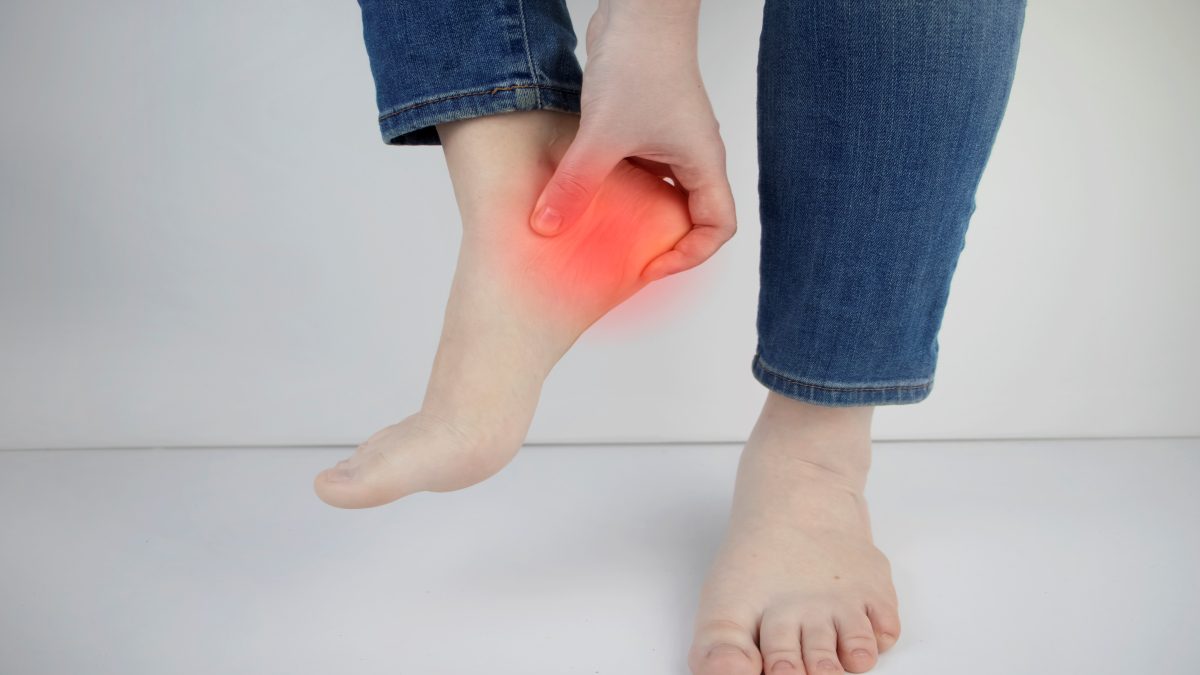What is plantar fasciitis?
Plantar fasciitis is one of the frequent reasons people experience heel pain—more specifically, pain on the bottom of the heel. It occurs so often that about two million people are treated for the condition each year.
Irritation and inflammation of the plantar fascia cause plantar fasciitis development. This strong band of fibrous tissue is found inside the bottom of the foot, running from the heel bone to the front of the foot. It helps support the foot’s arch, and it is meant to help absorb the pressure and stresses exerted on foot.
When too much pressure is put on the plantar fascia, it becomes irritated and inflamed, causing plantar fasciitis. Definition of plantar fasciitis is characterized by stabbing heel pain, especially severe when you first get up in the morning, but pain may also be severe with prolonged periods of standing or getting up from lying or sitting.
Runners and overweight people are at increased risk for plantar fasciitis, but it can also develop for no identifiable, specific reason.
Most of the time, plantar fasciitis resolves with simple treatments such as rest, nonsteroidal anti-inflammatory medications, and certain exercises to stretch the plantar fascia. In some cases, surgery is recommended as a treatment for plantar fasciitis, but this is usually only after other non-surgical treatments have been tried without improvement for at least 12 months.
Plantar fasciitis risks
In many cases, plantar fasciitis occurs without a known identifiable, specific cause. However, there are certain factors that elevate the risk of plantar fasciitis development. These include:
- Age: People between 40 and 60 years old are most at risk of developing plantar fasciitis.
- Participation in certain activities: Participating regularly in activities that place increased amounts of stress and tension on the heel and surrounding tissues is a risk factor for plantar fasciitis. Examples of these activities include:
- Ballet dancing
- Long-distance running and other running sports
- Aerobic dancing
- Foot and leg mechanics: Having a high arch or having flatfoot can put increased stress on the plantar fascia. Having tight calf muscles, which make flexing the foot difficult, is also a risk factor for plantar fasciitis.
- Excess body weight: Being overweight or obese puts extra stress on the plantar fascia.
- Working at certain jobs: Spending long hours on your feet—standing or walking, especially on a hard surface, can damage the plantar fascia and cause plantar fasciitis.
Many people with plantar fasciitis also have heel spurs, but heel spurs do not increase the risk of plantar fasciitis pain. About 10% of people have heel spurs, but only 5% of those with heel spurs experience foot pain. Since heel spurs do not cause plantar fasciitis pain, the pain of plantar fasciitis can be treated successfully without surgically removing the heel spur.
Causes of plantar fasciitis
The plantar fascia is designed to function as a shock-absorbing structure to support the arch of the foot. It is a strong and fibrous band of tissue, but it can bear only so much stress and stretch. When the band is under too much stress or tension, small tears can develop.
Repeated stretching and tearing can lead to irritation and inflammation of the plantar fascia, causing plantar fasciitis.
Click Here to read about Symptoms.
















Leave a Reply
You must be logged in to post a comment.